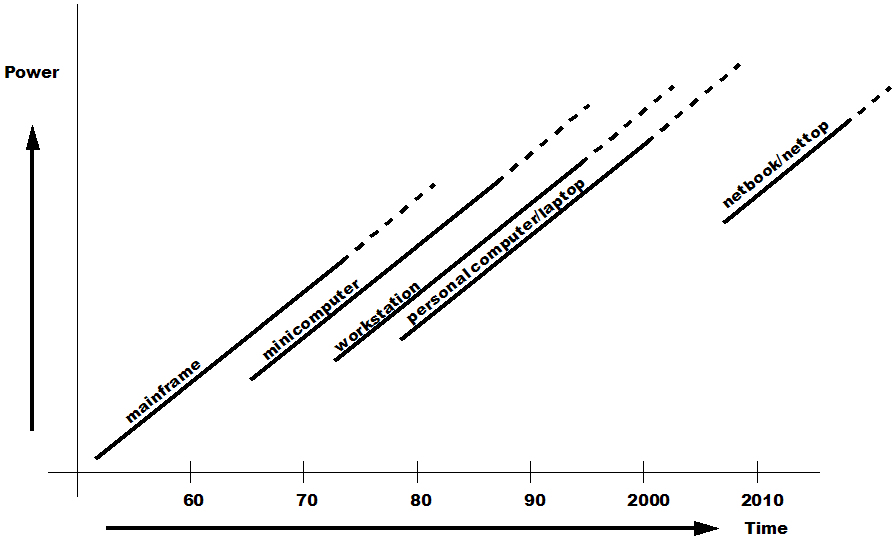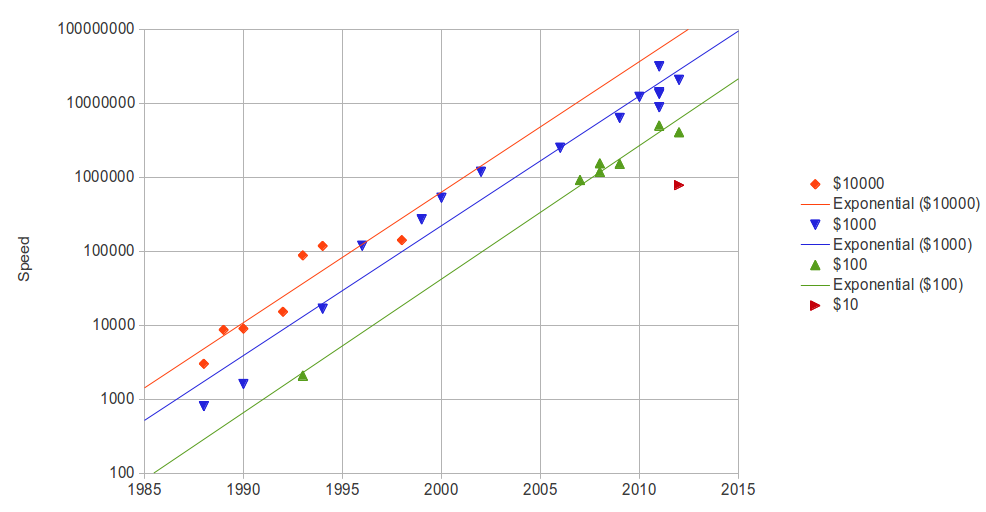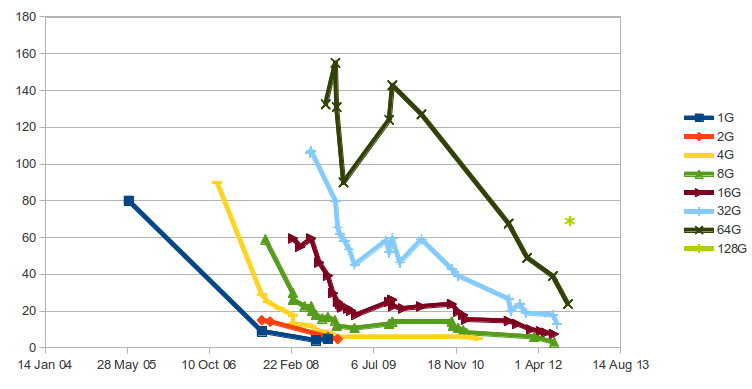In 2010 I gave a talk on how we should expect a ¤10 computer to emerge soon. (¤ is the non-specific currency character, and I used it because when talking orders of magnitude £10, €10 and $10 are the same price. Since I was talking in orders of magnitude, I defined the dividing point between computers costing ¤1000 (which is 103) and ¤100 (which is 102) to be 102.5, which is ¤316. So any computer under ¤316 counts as ¤100, and above as ¤1000)
My argument was that in the 50's and 60's we had ¤1M mainframes, in the 70's ¤100K minicomputers, in the 80's ¤10K workstations, followed by ¤1K PCs and laptops. Netbooks (and tablets) are just the next step in that procession, being the first of the ¤100 computers, and so therefore before long we should be anticipating the arrival of the ¤10 computer.
I also pointed out that with each order of magnitude drop in price we used the computers in a different way, and that it was interesting to imagine how we might use the ¤10 computer.
It was rewarding that less than 2½ years later you could buy the first ¤10 computer, the Raspberry Pi. Strictly speaking there were examples of computers at that price point earlier, such as the Arduino, but the Raspberry Pi is the first general-purpose computer at the price point that allows you to do the sort of things you can do with computers costing ten times as much.
In the talk I gave an indicative graph of the computing power development of the different classes of computer, based on the rough idea rather than actual data:
However, what I have now done is taken all the computers I have used in the last 25 years, classed them in their groups, plotted their power, and then calculated the trend lines:
It was very gratifying to see that the trend lines really did have the same slope (as you would hope), and you can see that if you wait about 6 years, you can have the same power computer you now have for one tenth the price (as indeed predicted by Moore's Law). However, it is interesting to see that the ¤10000 line is much closer to the ¤1000 line than the ¤1000 line is to the ¤100 line. This means that either the ¤1000 was early in coming or that the ¤100 computer was late (for several reasons I suspect the latter, and you can see on the top graph I had already drawn it that way).
And see that lone red point on the right-hand side? That's the Raspberry Pi. Now draw an imaginary trend line from that, parallel to the others... What we can see is that the Raspberry Pi is around as powerful as a ¤100 machine from 2007, or a ¤1000 computer from around 2001 or so.
The Future
So should we anticipate a ¤1 computer the power of a Raspberry Pi in 5 or 6 year's time?
The problem here is manufacturing and packaging costs (and it is no surprise that the Raspberry Pi is a barebones machine).
As it happens, I have also been tracking the price of USB stick prices over recent years. This also gives an interesting graph:
What you can see from this (apart from the exponential drop in prices) is that when the price for a particular size drops below a certain point (about ¤3), they stop being produced at that size, since the next size up is approaching that price anyway. Nobody (with any sense) buys 1G or 2G USB sticks now, and since 8G sticks have been seen for ¤3 already, 4G must be on the way out.
So really, we should expect the same with computers, that the manufacturing and packaging costs will be too high to allow a (true) ¤1 computer that is sold one-off to be produced. On the other hand, ¤3 is just under the wire for my definition of a ¤1 computer, so we can anticipate computers in about 6 years matching my price requirement.
So how will the ¤1 computer be used? Well frankly, we haven't yet settled on the use pattern for the ¤10 computer yet, but one thing we can say is that at ¤1, there will be feasible to put a computer in everything, even light fittings.


